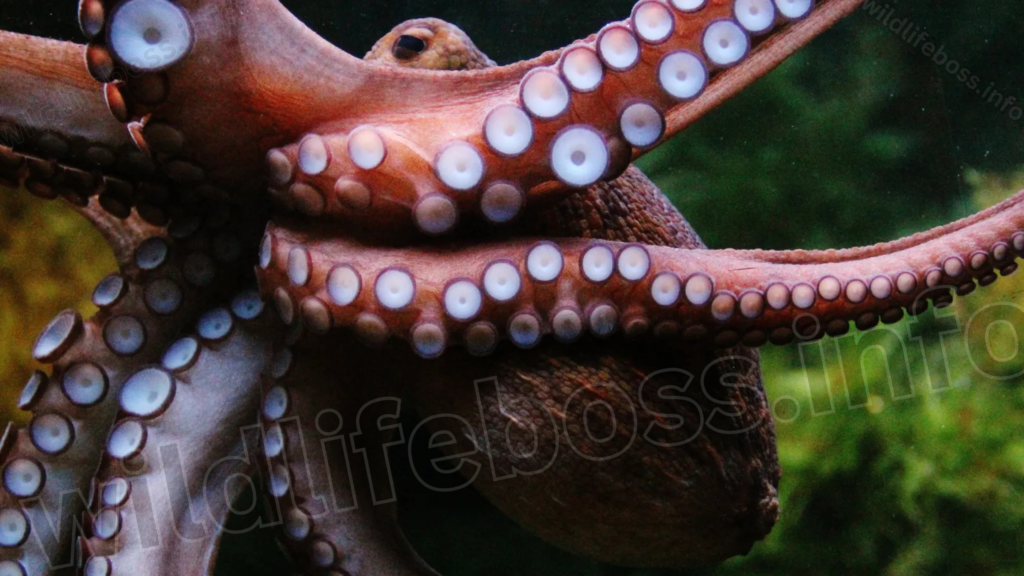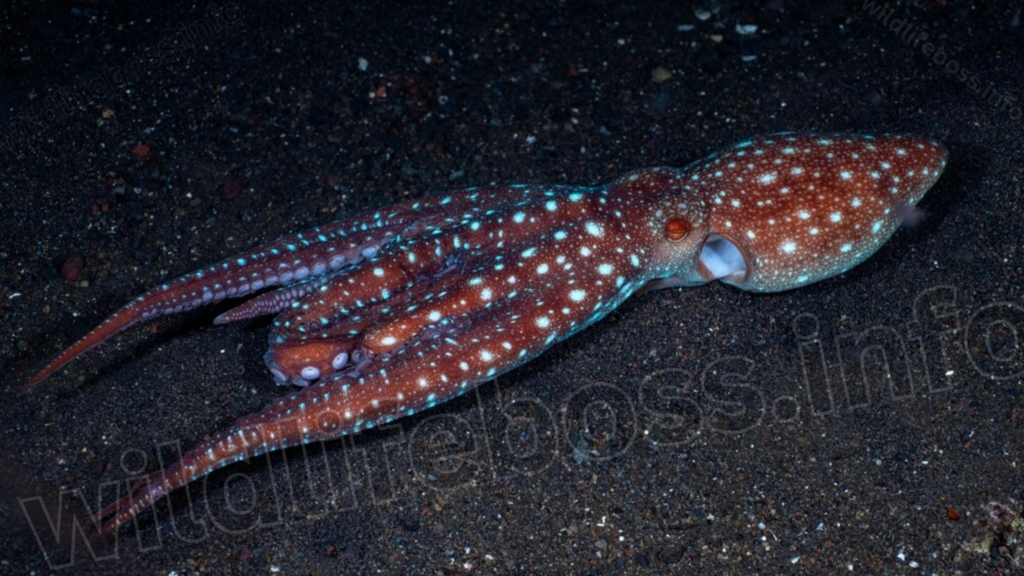The most beautiful creature in the sea is the octopus. Frequently considered cheerful and extremely intelligent where does this intelligence stem from?
There are nine brains in an octopus: eight smaller brains in each arm and one larger brain in the center. The donut-shaped central brain, which encircles the esophagus, communicates with the other brains by sending commands. Each arm can independently move, touch, and taste its surroundings because to the smaller brains.
Learn about the nine brains of octopuses and the proof of their extraordinary intelligence by reading on.
Octopus And Their Nine Brains

Octopus and their relatives the squid and cuttlefish have different evolutionary back ground from most other invertebrates.
They are no less intelligent than many other invertebrates and they have larger nervous systems. Although they have a very different structure in the brain compared to those of vertebrates, they have several similarities.
Octopuses can recognize people and explore through play. They also have different forms of short-term and long-term memory and sleep patterns.
One Central Brain
There are nine brains in octopuses, and the nervous system is controlled by the bigger central brain. Its donut-shaped brain is housed inside its cranium. It encircles the esophagus.
Eight Smaller Brains
At the same time, a little brain or collection of nerve cells in each of the octopus’s eight arms regulates its movement. Each arm can move, touch, and taste independently of the central brain thanks to these smaller brains.
These nine brains allow the limbs of an octopus to cooperate as well as function independently of one another.
Octopuses can use their limbs to accomplish tasks swiftly and efficiently because they have several brains.
Brain Folds
The formation of the creases and folds in octopuses’ central brains is known as gyrification.
This mechanism has been seen in 20 octopus species, although it typically occurs in the very complex and evolved brains of vertebrates.
How Octopuses’ Brains Work Together
The eight additional brains receive commands from the primary brain, like “look for food.”
The octopus reacts by moving its arms in different directions, feeling its environment, tasting food, and contracting and relaxing its muscles.
The central brain, meanwhile, concentrates on keeping an eye out for predators.
The central brain receives the information after one of the octopus’s arms has found food, allowing it to determine the best course of action.
Do smarter people have greater brains?
If having several brains doesn’t make you the smartest animal on the planet, what’s the point? Octopuses perform admirably in this area. They are not the most smart mammal in the world but they are the most smart invertebrate in the world. As a matter of fact, octopuses and other invertebrates’ neuronal body plans are practically indiscernible. That is, according to the genetic data, octopuses resemble vertebrates more than invertebrates – even though this is still a fairly distant resemblance.
Think about this: the majority of invertebrates are brainless. Some don’t even have a ganglion, such as echinoderms. The only structure that resembles a brain in these lesser invertebrates, such as sea stars, is a nerve ring. Located at the central disk of the star, this nerve ring divides into five radial branches, each of which leads into an arm.
Do other molluscs possess more than one brain?
Octopuses are a unique kind of animal. The abundance of brains that octopuses possess is unmatched by any other mollusc, with the exception of cuttlefish; however, cephalopods are generally intelligent creatures.
Since this site presents other cephalopods as intelligent creatures, one would not be amazed to learn that squid are also blessed with large brains. Squids, in contrast to octopuses, contain three separate parts: a brain connect[ed] to a large central ganglion, two optic lobes, and a separate brain in each arm. While today lat least the anatomy of a squid’s brain is known, deriving its capability and intelligence is still a rather difficult proposition.
sea also: Do Sharks Eat Whales?(Who Is the Best 1 Predator)
So, how intelligent are octopuses?

Researches often compare the brain of animals to the body of the same animal and judge the intelligence of the animal by the difference.
Intelligent animals generally have a higher ratio of brain to body mass though this can only tell us half the truth.
OCTOPUSES Few animals on this earth own the largest brain to body size proportional than octopuses. Octopuses have truly giant brains, much larger than those of many vertebrates apart from mammals.
Resource 2 provides information that octopuses have almost the same number of neurons as dogs.
That is, the limbs of common octopus, the scientific name of which is Octopus vulgaris, contain 66% of 500 million neurons which remain in its central brain.
Octopuses’ Abilities
However, the performance of these animals across a range of tasks is not dependent solely on either the size of their brains or count of neurons.
Navigate Complex Tasks
Octopuses can navigate mazes and do difficult tasks in order to find food. They are very good at wriggling into and out of containers of various shapes.
Employ Advanced Hunting Tactics
The hunting strategies of several octopuse species are remarkable.
When the victim jumps away, the Pacific striped octopus, for instance, uses its other seven arms to catch it after creeping up to it and tapping it on the shoulder.
Furthermore, the many kinds of prey that octopuses consume—such as fish, clams, and crabs—require distinct hunting strategies.
Utilize Tools
Also, octopuses employ tools, which is credited to no other animal, and which is an indication of the learning ability of an animal.
It has been observed that octopuses in their natural environments employ stones as shields to guard the entrance to their dens.
To get food in lab settings, they also need instruments.
There are instances when the common blanket octopus will carry Portuguese man-of-war tentacles for use as firearms.
These tentacles can be used on both predators and prey, however the common blanket octopus is immune to their strong poison.
Recognize Individuals
Optic lobes, the areas of the brain involved in vision, are enormous in the brain of an octopus. This suggests that the way of life of an octopus depends greatly on its vision.
Octopuses are able to identify people, even those belonging to distinct species. They can even distinguish human faces.
In one case, an octopus that was kept in custody at a university was described as appearing to resent one of the staff members. This specific employee was sprayed with water each time she passed the octopus’s aquarium.
Transform Themselves
The capacity to completely change into several animal species allows the mimic octopus to deceive its predators. Among other things, it may transform into a flounder, tunicate, lionfish, sea serpent, and more.
This octopus decides what appearance to adopt depending on the predator it is facing.
A mimic octopus that changed its appearance to resemble a banded sea snake was seen by scientists when a damselfish began attacking it. The banded sea snake is one of the recognized predators of damselfishes.
How long does an octopus live for?
When it comes to the anatomical structure, you would expect that octopuses, who have such a peculiar body, are immortal creatures.
Unfortunately, no. According to National Geographic, most species only live for one to two years in the wild on average. According to the Nature Conservancy Council of Canada, the Northern Giant Pacific octopus is the largest species and has the longest lifespan.
After mating or laying and caring for eggs, it often dies around the age of five. It can grow up to five meters in length and weigh between twenty and fifty kilos (about 16.5 feet and forty-four to 110 pounds).The National Zoo’s resident octopus, Pandora, had been entertaining guests in her tank for 27 months—quite a record for an octopus—before she passed away, according to a blog post by Scientific American.
What is the number of hearts in an octopus?

An octopus has three hearts instead of just one. Blood is pumped to the gills by two of them, known as the branchial hearts, where it absorbs oxygen. The third, or systemic, heart pumps oxygenated blood throughout the body to energize the eight tentacles for whatever they and their suckers choose to do.
As highly active cephalopods, octopuses are believed to require their three hearts in order to sustain their strength. The octopus, however, does not use its systemic heart when swimming and becomes fatigued fast. Instead, it uses its body mantle to generate water jets to fuel propulsion. The fluid is the blood of octopus which also has a blue color due to a copper based oxygen carrying protein, hemocyanin.
Earlier, New Scientist has pointed out that several hearts may be needed because hemocyanin not as good an oxygen transporter as human-based iron hemoglobin. Unfortunately, in acidic environments, hemocyanin is less effective at carrying oxygen. Future octopus anatomy may not thrive in this environment since climate change is steadily decreasing the pH of the world’s waters.
Conclusion
The total number of brains in octopus is nine. The central or primary brain, which is situated in the octopus’s head, has a donut-like form. Each of the octopus eight limbs contains a brain, which receives commands from the central brain.
Each arm of the octopus is capable of independently moving, feeling, and tasting its surroundings because to its smaller brain.
These animals are extremely intelligent; they can use tools, adopt sophisticated hunting strategies, negotiate challenging tasks, identify members of other species, and more.

